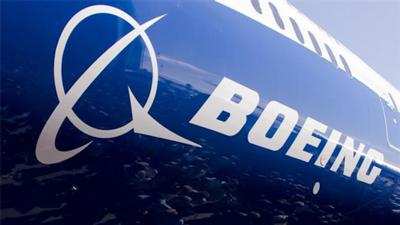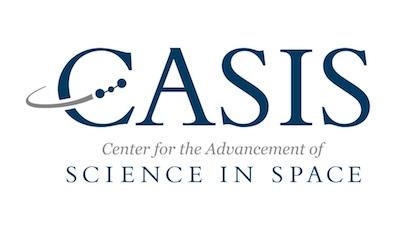Grants Help Fund Costs For Flight To International Space Station
Boeing and the Center for the Advancement of Science in Space (CASIS) have again joined forces to promote the use of the International Space Station (ISS) as an orbiting laboratory capable of producing cutting-edge research across numerous scientific disciplines. The two organizations on Nov. 2 granted a total of $500,000 to three microgravity research companies through startup accelerator MassChallenge.

The awards to Cellino Biotech, Guardion Technologies, and MakerHealth mark Boeing and CASIS's fourth year of collaboration on the “Technology in Space” prize at MassChallenge Boston.
CASIS is the nonprofit organization responsible for managing and promoting research onboard the ISS U.S. National Laboratory. Boeing is the ISS prime contractor, responsible for designing, building and processing the American modules and the integrated truss system that powers the station, for sustaining engineering, and for processing experiment and systems racks for launch, installation and operation.
The grants will provide seed funding for the three awarded companies and assist with hardware costs for flight to the ISS National Lab. With this latest collaboration, Boeing and CASIS have jointly partnered to fund 11 separate innovative startups through MassChallenge. The second round of these awarded investigations, Biorasis and Launchpad Medical, is scheduled to launch to the ISS National Laboratory in early December.

This year’s winning projects had to incorporate science or technology initiatives that would effectively use and benefit from ISS National Lab capabilities. CASIS will continue to work with additional MassChallenge “Technology in Space” proposers to build on their ideas and potentially transform them into flight-ready projects.
Below are the 2017 recipients of the “Technology in Space” award:
Cellino Biotech Inc.
Investigating Proliferation of NanoLaze Gene-edited induced Pluripotent Stem Cells aboard the ISS
The goal of this proposal is to gene-edit induced Pluripotent Stem Cells (iPSCs) using Cellino Biotech’s platform, NanoLaze, on Earth and then investigate their proliferation under microgravity on ISS to show enhanced stemness of the cells. This data would unlock the potential to generate the 200 to 500 million stem cells necessary for a cell-based therapy, which is not possible with currently available stem cell technologies on Earth. Cellino will use its proprietary NanoLaze™ platform to deliver a powerful gene-editor, CRISPR/Cas9, to iPSCs. Maximizing stemness in microgravity would enable Cellino and therapeutic partnering companies to supply more patients with universal cells to treat critical genetic diseases such as Alzheimer’s, Parkinson’s, and hemophilia, which are among the estimated 6,000 genetic diseases in existence, of which 95 percent have no approved therapies.
Guardion Technologies
Convection-Free Synthesis of 2D Nanomaterials on the ISS for Improved Radiation Detection
Guardion Technologies is developing miniaturized ionizing radiation detectors, which can be deployed in large numbers to provide real-time monitoring networks for interrogating possible radioactive sources. Such networks will enable early and/or remote detection of possible radiological threats, and serve as a highly effective triage mechanism for emergency responders. At the core of the miniaturizable detection technology is a novel patent-pending process that utilizes quantum properties of certain nanomaterials such as carbon nanotubes, graphene, and other atomically thin materials such as monolayers (2D). Guardion hypothesizes that convection-free synthesis of 2D materials in microgravity will result in samples with greater crystallinity, higher electronic mobility, and lower electronic noise, which will enable an enhanced signal-to-noise ratio of these detectors.
MakerHealth
AmpliRx: A Manufacturing Pharmaceutical Lightweight Instrument
MakerHealth has created the AmpliRx modular biochemical manufacturing platform that enables distributed, affordable, and scalable production of medications. The MIT-developed innovation includes a first-in-class membrane-to-membrane continuous flow reactor system that can operate without pumps or advanced instrumentation and runs using minimal power by using proprietary modular Ampli blocks that connect to each other to form reaction-to-reaction pathways. Gravity and, subsequently, evaporation play an adverse role to fluid flow and reaction reliability of membrane-based chromatographic flow. While previous work has been done to understand the effects of microgravity on the separation of substances, the AmpliRx platform focuses on fusion-based reactions of substances during organic synthesis and bioprocessing reactions. Experiments in a microgravity environment will inform our understanding of and help to optimize membrane material properties and geometries. Mitigating these adverse forces will be
beneficial to increasing the spread rates and reliability, thus decreasing reaction times within our platform.
Final award of any grant money is contingent upon acceptance of legal terms and conditions between recipient, CASIS, and Boeing.
(Source: Boeing news release)
 Unfortunate... ANN/SportPlane Resource Guide Adds To Cautionary Advisories
Unfortunate... ANN/SportPlane Resource Guide Adds To Cautionary Advisories ANN FAQ: Turn On Post Notifications
ANN FAQ: Turn On Post Notifications ANN's Daily Aero-Term (04.29.24): Visual Approach Slope Indicator (VASI)
ANN's Daily Aero-Term (04.29.24): Visual Approach Slope Indicator (VASI) ANN's Daily Aero-Term (04.28.24): Airport Marking Aids
ANN's Daily Aero-Term (04.28.24): Airport Marking Aids ANN's Daily Aero-Linx (04.28.24)
ANN's Daily Aero-Linx (04.28.24)




